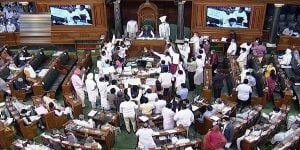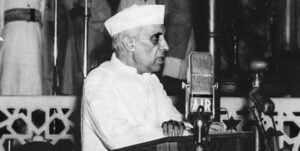A no-confidence motion in the administration of Indian Prime Minister Narendra Modi will take place in parliament due to the impasse with the opposition over the violence in the state of Manipur. On Wednesday, a member of the Congress opposition party introduced a resolution of no confidence.

Image Source: NDTV
Given that his party and its allies have a resounding majority in parliament, Mr Modi’s administration won’t lose the vote. But according to opposition leaders, the action will compel Mr Modi to discuss Manipur. They have insisted he addresses the legislature on the ethnic riots in the state that started in May between the tribal Kuki minority and the Meitei majority.
What is a no-confidence motion?
A government can only hold power in a parliamentary democracy if it has a majority in the directly elected House. This principle is embodied in our Constitution’s Article 75(3), which states that the Council of Ministers is jointly liable.
The Lok Sabha’s rules offer a specific mechanism—a motion of no-confidence—for evaluating this collective responsibility. A resolution of no-confidence against the Council of Ministers may be introduced at any moment by any member of the Lok Sabha who can secure the support of 50 of their peers.

After that, there is a discussion over the motion. The Treasury Benches respond to the concerns raised by the MPs who support the motion by pointing out the government’s weaknesses. The proposal is then put to a vote; if it passes, the government is obligated to resign.
A motion of no confidence can only be introduced in the Lok Sabha.
Also Read: All You Need To Know About ‘INDIA’ For The 2024 Lok Sabha Elections
How many times has the no-confidence motion been used?
Acharya J. B. Kripalani introduced the first motion of no confidence against the Jawaharlal Nehru-led government in the third Lok Sabha of 1963. Were 40 MPs present for the whole four-day, 21-hour debate on the resolution.
PM Nehru then remarked, “A no-confidence motion aims at or should aim at removing the party in government and taking its place. It is clear in the present instance that there was no such expectation or hope. And so the debate, although it was interesting in many ways and, I think, profitable too, was a little unreal. Personally, I have welcomed this motion and this debate. I have felt that it would be a good thing if we were to have periodical tests of this kind.”

Source- Little India
Since then, 26 further no-confidence motions have been introduced in the parliament (not including the most recent one), the most recent of which was brought by the TRS in 2018 in opposition to the former Narendra Modi administration.



















































































